Vegan Food Festivals Redefining Plant Based Cuisine
44 min read Explore how vegan food festivals are reshaping plant-based cuisine with boundary-pushing chefs, global flavors, and sustainable practices, transforming public perception and driving the next wave of culinary innovation. October 07, 2025 06:08
The gates open and the first breath of the day hits like citrus at the cutting board: bright, bracing, and full of promise. There is the low hiss of planchas heating up, the snap of a tent zipper, the sweet-roasty smell of corn masa waking up on a griddle. Someone across the aisle cracks open a tub of gochujang; it blooms in the cool air, salt and heat and fermented funk entwining with coffee and coconut sugar steam from a nearby nitro tap. A vendor shakes a pan of sizzling king trumpets until their edges catch, brown and frilled like lace. A child points at a spiral of purple ube soft serve and bounces on their heels. You could be anywhere and you could be everywhere, because vegan food festivals have become global town squares—a collision of technique, tradition, and a hundred negotiable ideas about what pleasure tastes like when no animals are involved.
The New Grammar of Vegan Festivals
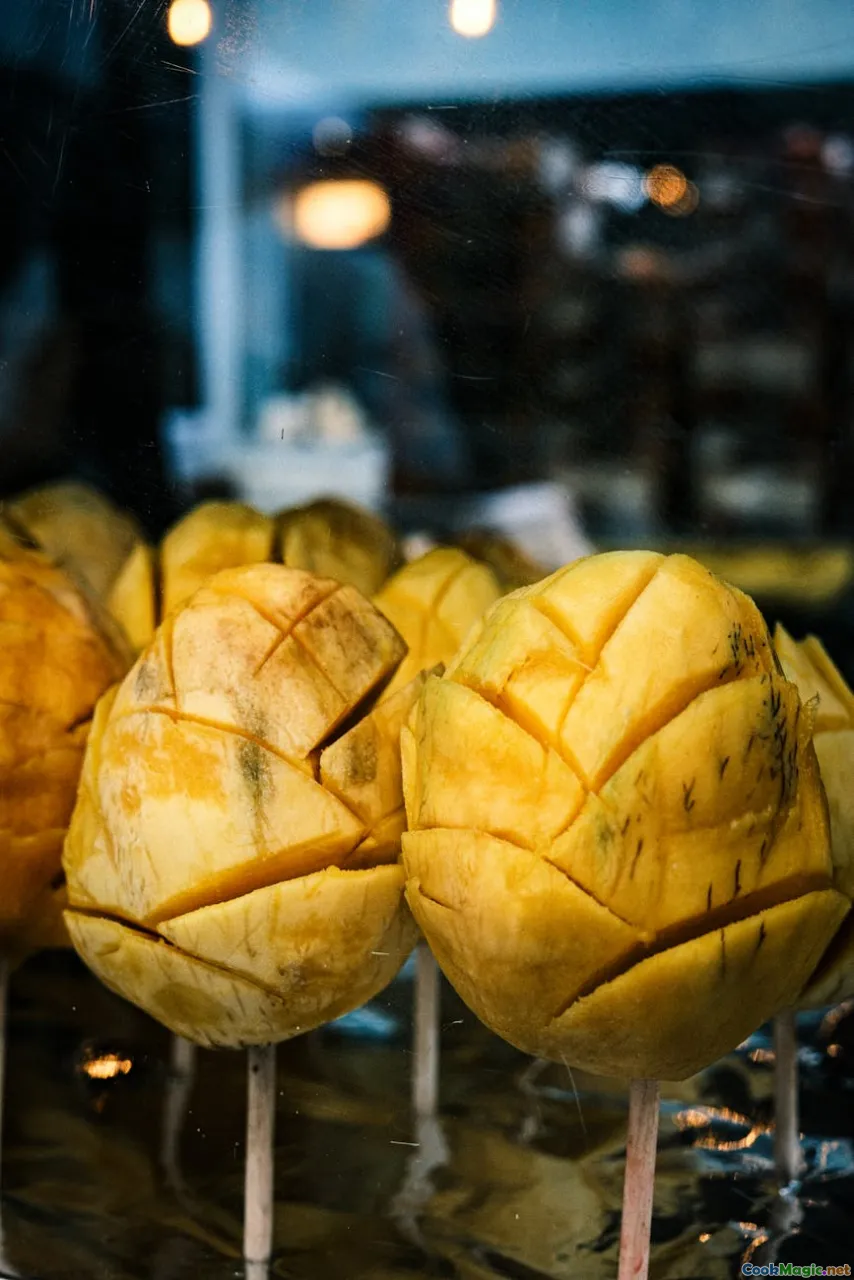
For years, plant-based festivals were cast as a niche: a landscape of tofu dogs, nutritional yeast, and righteous pamphlets. That history matters; it paved the way for what we see now. Today, the language is broader. The grammar has changed. The subject is craveability, the verb is char, and the object is surprise.
No longer a subculture sideline, the biggest gatherings operate like culinary salons. Vendors iterate on heritage recipes in public. Home cooks turn into micro-entrepreneurs. Ingredient producers—the tempeh makers, the seaweed harvesters, the miso fermenters—set up booths across from chefs who treat their products like paint on a canvas. Trade shows and festivals have merged edges as well: New York’s Plant Based World Expo brings C-suite buyers into earshot of sizzling bao, while pop-up festivals like Vegan Street Fair in Los Angeles or Veganes Sommerfest in Berlin feel like think tanks made of smoke and sauce.
The new festival plate is less about imitation and more about translation. Consider a doner, a birria taco, a bowl of tteokbokki. The question is not how to fake meat; it’s how to render the soul of a dish—its heat, its drip, its snap—through plants. That’s why lines form for mushroom-based Nashville hot, why banchan bars of quick-pickled perilla and kimchi disappear by noon, and why you’ll find truffle cashew cream deployed like a finishing butter rather than a blunt dairy substitute.
Where the Movement Tastes Different: Festival Field Notes from Cities
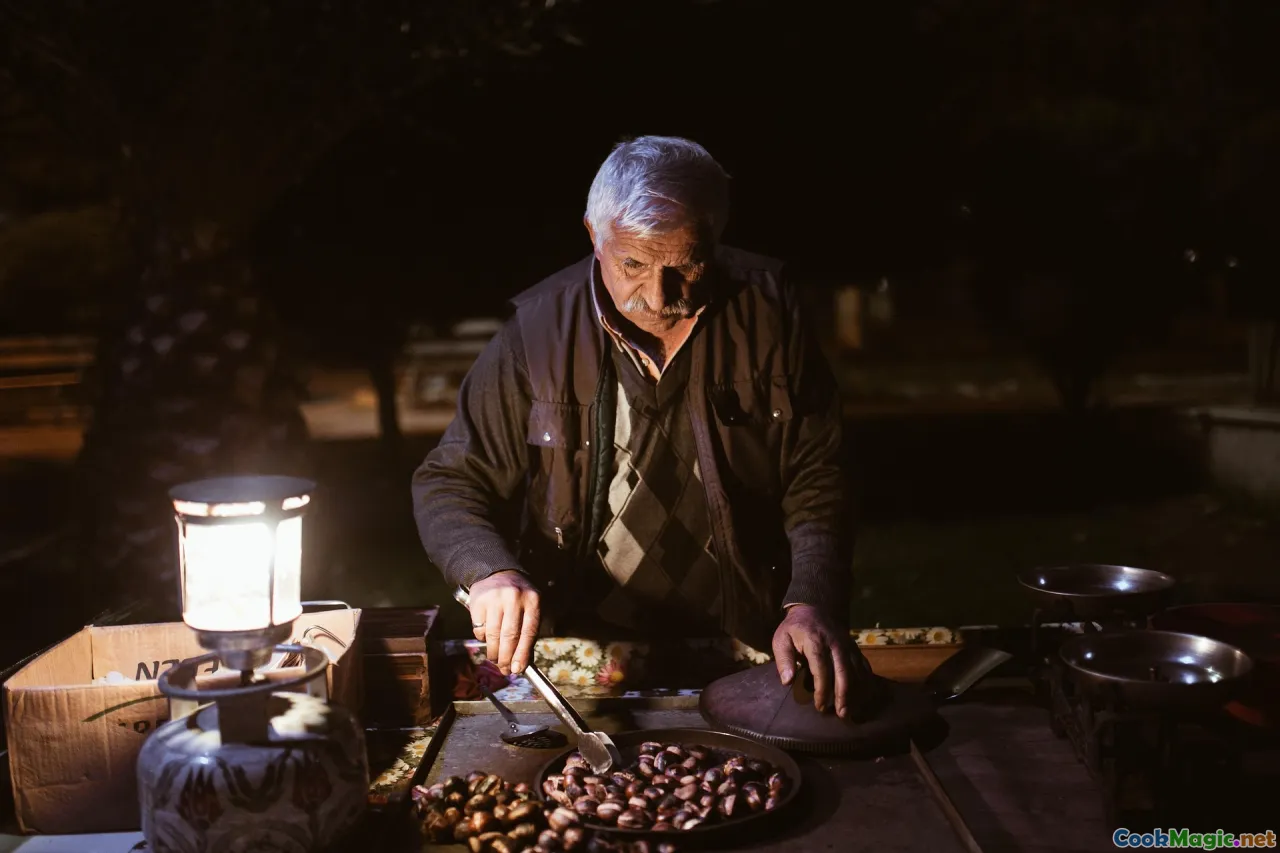
Berlin: Veganes Sommerfest at Alexanderplatz

Berlin likes its food with a deep bass note of smoke and a flash of vinegar. At Veganes Sommerfest, seitan doner spins on vertical spits, charred edge to tender center, stacked with insistently handmade pride. A vendor carves overlapping slices that flutter into a warm flatbread painted with garlic sauce and herbed oil. The richness is anchored with shredded cabbage, pickled cucumber coins, and a stripe of chile sauce that tastes like it learned discipline in a cellar full of paprika. Currywurst stands replace the brat with a snappy, paprika-forward plant sausage and a sauce that is more tomato jam than ketchup. A potato salad is tossed in aquafaba mayo that clings to the fork and tastes like lemon zest and mustard seed, with a whisper of smoked salt.
Berlin’s festival does a fine job of connecting modern veganism to old-school German Imbiss culture. It isn’t uncommon to see a vendor selling sauerkraut that crackles with alive tang beside a stand offering veganized dampfnudeln—steam-soft, pan-crisp dumplings glazed with poppy seeds and sugar, served with plum compote. You might sip a tart Rhabarberschorle while gnawing on a mushroom roll that coats the corners of your mouth with chili-garlic oil.
Toronto: Veg Food Fest on the Harbourfront

Toronto’s long-running Veg Food Fest keeps the focus on community, diaspora flavor, and precise execution. The lake kicks up a clean wind, and there are lines for Jamaican patties with a rust-colored pastry that flakes into buttery petals. The filling might be curried lentils with thyme and Scotch bonnet warmth or ackee brightened with scallion. Trinidadian doubles arrive soft and messy, the bara slicked with pepper sauce and tamarind, the chana creamy and cumin-driven, onions sweet from a quick pickle. Ethiopian injera wraps fold spiced shiro and greens into tangy scrolls, the teff’s sourness humming against berbere and garlic. Poutine with mushroom gravy is poured from a pot that smells like roasted onions and peppercorns. The curds are replaced by a cashew-based crumble, gently salty, so that the crunch-collapsing of a fry still feels like winter relieved by warmth.
You rarely walk more than twenty feet without bumping into someone with a bao stuffed with crispy tofu and a pickled something that stings and then soothes. Toronto vegetarians have been doing this since the mid-80s, which is to say the technique on display is confident: jerk seitan that sings with pimento smoke, Thai khao soi broths that balance coconut cream with kaffir lime, and Persian ash-e-reshteh with ribbons of noodles and greens.
Los Angeles: Vegan Street Fair, North Hollywood

Los Angeles does hospitality by the fistful. Vegan Street Fair is a neon river, a scent story of chile and charcoal. A trompo of al pastor-style seitan turns like a lighthouse; the edges crisp and drip, then are chopped against the cutting board with a quick-five rhythm. Tacos get a press of pineapple that sprays sugar-sour across your knuckles. Birria is everywhere, the consomme a deep rust color, nixtamal’s quiet earthiness wobbling against guajillo and ancho. A chef ladles the broth over a crisped tortilla filled with pleated oyster mushrooms; there is a momentary hush after the first bite, then the table begins to hum in admiration.
There is Filipino tocino made from marinated tofu, glossy and sticky-sweet, tucked into pan de sal. Korean vendors blister tteok on skewers and brush them with a gochujang glaze that builds with each chew. Vegan hot chicken means double-fried mushrooms with a cayenne-laced oil that leaves jeweled freckles on the paper tray. Sides matter here. A coleslaw that crunches like fresh snow is hit with rice vinegar and a thread of sesame oil. Ube soft serve swirls into lavender spirals, and someone hands you a tiny spoon made of compressed oat bran—edible, slightly sweet, gone in three bites.
London: VegfestUK and Vegan Nights
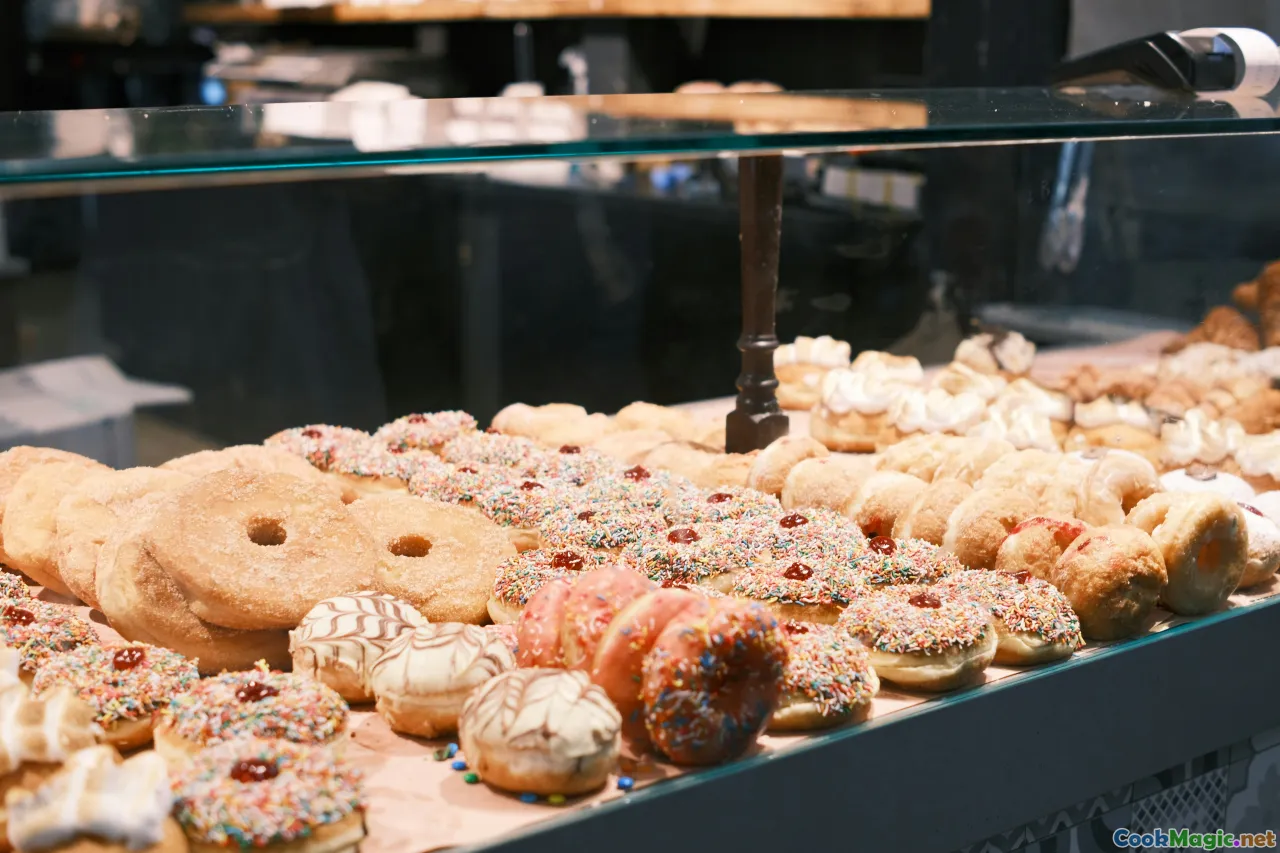
London is where street food meets pub comfort and YOLO dessert. At VegfestUK, you can eat doner that drips onto your wrist while chasing it with a pint of bitter and still glide toward a slice of sticky toffee pudding crowned with oat custard as silky as new paint. Vegan Nights, a street market turned monthly high-energy social, shows off London’s unfussy excellence with a wristband and a playlist.
A pie and mash stand does vegan liquor sauce—the parsley bright, the base a vegetable stock bolstered with seaweed for marine depth and a hint of white pepper. There are curry stands where smoky aubergine breaks under a spoon next to chickpeas that taste like they were kissed by a tandoor. A chaat vendor showers a bowl with sev, pomegranate seeds, and a chutney that fizzes with tamarind and mint. Doughnut stalls have queues that snake, and for good reason: a custard-filled ring wears a sugar crust that cracks like the top of crème brûlée.
Seoul: Seoul Vegan Festival

The air in Seoul’s festival smells like gochugaru warmed on oil and kelp dashi breathing steam. Tteokbokki stands ladle a sauce that coats and clings, the rice cakes bouncy and tender-chewy, every chomp a metronome. A temple food stall offers perilla leaf kimchi, quietly aromatic, and a braised burdock root with a soy glaze so clean you taste sunlight on wood. Vegan kimbap comes rolled with spinach, pickled radish, braised mushrooms, and a smear of tofu cream that adds body without heaviness. A noodle vendor works cold buckwheat naengmyeon with shaved ice, a crowning cucumber, and mustard heat that catches in the nose and clears it, polite but firm.
What’s thrilling is how the city’s modernity leans into ancestral restraint. There is a stall with deep-fermented kimchi that has gone umami-nutty, next to a new brand sampling oat-based ice cream ripped with black sesame and a ribbon of citrus syrup. The vibe feels like a conversation between a grandmother and a startup founder.
Portland: Portland VegFest
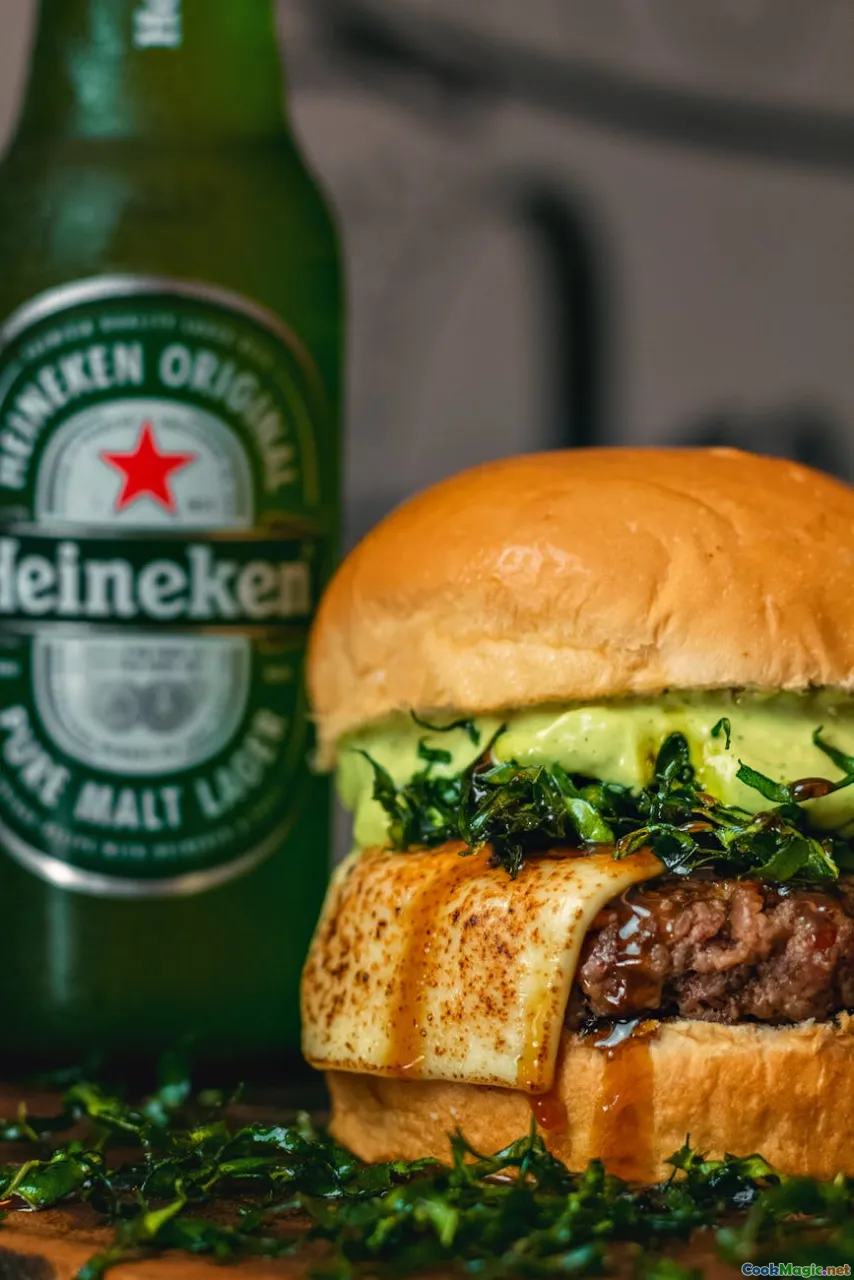
In Portland, the trees outside the convention center look like they were designed by a scenic artist working in emerald. Inside, you get the sense that every vendor has a compost plan. Food cart lineage shows up in a disciplined way with flavor. There is a burger built from black beans, walnuts, and smoked peppers that eats like a backyard memory: the patty seared hard enough to lift its scent into your hair, the edges nubbly and crisp, the center tender with a polite crumble. A hazelnut romesco drips bright red onto everything, oily in the best way, while a chanterelle toast with garlic confit leans autumnal and woodsy.
Fermentation takes center stage. Hot sauce lines include lacto-fermented peach and habanero bottles that tingle at the edges of the tongue. Sauerkrauts and kimchis are paired with fries and grilled sandwiches, not just stuck in jars. Coffee is something you sip and analyze: nitro cold brew with oat milk that rolls like velvet, paired with a cinnamon sugar cake mini-doughnut still warm enough to fog the bag.
Miami: Seed Food and Wine

Miami’s aesthetic is sunlight, palms, and the clink of ice in a glass. Seed Food and Wine marries festival casual with a fine-dining wink. Jackfruit ceviche gets cured with sour orange, jalapeño, red onion, and a handful of cilantro. It arrives cool as sea spray, the jackfruit firm and slightly fibrous, carrying citrus like a well-cut suit. There are arepas stuffed with avocado-heavy reina pepiada that drips in ribbons, Venezuelan comfort reimagined. Plantains fry into gold coins and get a swirl of aji amarillo that tastes like summer deciding to stay. Natural wine tents pour skinsy whites that smell like apricots and wildflowers, the slight tannic grip on the finish stitching neatly to fried food’s crisp edges.
A Weekend Plate-by-Plate: A Personal Journal from the Field

Friday night, Los Angeles, and the streetlights bounce off a river of people. My first bite is a grilled elote slathered with cashew crema and dusted with an ancho-lime spice that stains my fingertips red-orange. The kernels pop, sweet then caramelized, and the crema brings weight the way good whipped cream does to a shortcake. I follow a scent of sesame and smoke to a stall where a massive pan of mapo fries is being folded. The cook starts with Szechuan peppercorn oil, then lays in a slurry built on fermented black beans and doubanjiang. The fries get coated in a glossy fire that makes my lips sing; the numbness blooms, then is tamed by scallion and a spoon of chilled tofu crumble, simply salted and lush.
I drift to a quieter corner for oyster mushrooms battered in rice flour and club soda. The cook double-fries, listening to the oil like a musician. Spice dust, fresh from the mortar—paprika, onion powder, mustard, a pinch of cinnamon—melts into the crust. I pick up a cup of vinegary slaw with celery seed and coriander that cuts through the richness like a sharp knife through a ripe tomato.
Saturday noon, same fair, different craving. I watch a trompo rotate. The vendor slices off bronzed petals of al pastor-style seitan and tucks them into a tortilla that whispers when folded. Pineapple juice drips onto my wrist, sticky and bright, and I chase it with a sip of jarritos-like house soda perfumed with tamarind and lime. A child next to me dunks a fry into a puddle of vegan queso spiked with jalapeño; we lock eyes in silent fellowship.
By late afternoon, I need green. A Thai stand does a papaya salad that crackles like radio static: green papaya snapped thin, long beans, cherry tomatoes, a dressing that speaks fish sauce without using it—kelp, soy, miso, lime—and a fistful of roasted peanuts that hang at the back of the palate. The heat is cumulative but kind. I steal a taste of a friend’s Ethiopian combo and feel the teff’s sour anchor everything—wots of lentils, collards, cabbage a touch sweet from a careful braise.
Sunday morning, Smorgasburg LA, where vegan vendors are woven into the broader market. I head for a stand that only sells one thing: a breakfast sandwich. The biscuit is shattering at the edges, laminated with coconut oil and brushed with maple. The patty is black-eyed pea and sweet potato, crisp-crusted and smoky. In between sits a folded chickpea omelet, sultry with kala namak. A swipe of harissa mayo and a leaf of peppery arugula stand in for the pickles I expect; the sandwich is a balanced equation. I finish with a cup of cold brew poured over coffee ice cubes and a wedge of watermelon dusted with lime and tajin. With hands sticky and mouth buzzing, I realize I have not thought once about what these dishes were replacing. They simply were.
Techniques That Make Plants Irresistible (And Festival-Proof)

Festival cooking demands technique that survives heat, time, and weather while delivering a payoff in seconds. The best booths feel like outdoor laboratories of texture and aroma. A few patterns emerge for culinary pros:
- Double-cook for structure. Mushrooms become transcendent when par-cooked to purge moisture, then marinated, then seared or fried. King trumpets sliced lengthwise deliver scallop-like sear if first steamed, pressed between sheet pans to drive out water, then basted with soy, maple, and smoked paprika.
- Batter wisely. Rice flour and cornstarch batters stay crisp longer than wheat. A light tempura-style batter with seltzer clings to rough surfaces like oyster mushrooms, maintaining lift even over a 10-minute stroll.
- Layer umami, not salt. Combine miso, toasted tomato paste, mushroom powder, and seaweed to build depth without oversalting. A teaspoon of blitzed kombu-plus-bonito-style substitute—kelp, dried shiitake, dried tomato—folded into sauces reads as rounded savor.
- Treat legumes with respect. Pressure-cooked chickpeas offer creamy centers for falafel; chilling the dough lets starch retrograde for crumbly texture. Season from the inside out with a warm spice bloom in oil.
- Finish with acid and fresh. A squeeze of lime, a splash of sherry vinegar, or a dusting of sumac wakes fried food. Chopped herbs (cilantro stems, parsley leaves, mint ribbons) give a just-picked snap.
- Fat matters. Cashew cream becomes silky when blended with a little oil and lemon; emulsions stabilize with a pinch of xanthan or just patience and slow pouring. Oil carries spice; keep it clean and fragrant.
- Smoke and char as seasoning. Charred scallions swapped into salsas, blistered tomatoes for gazpacho, smoked paprika for structure—all give plants the memory of fire.
- Ferment for sparkle. Quick pickles bring a high note; long ferments supply bass. Keep a rotating pickle of red onions, jalapeños, or daikon to add crunch and acid.
At festivals, tiny decisions make big differences: linen-free salts that don’t clump in humidity, squeeze bottles labeled with tape you can read at dusk, cambros that stack with rice bins for impromptu plating stations. Craft becomes choreography.
Deep Roots: Festivals Tapping Ancient Plant Traditions
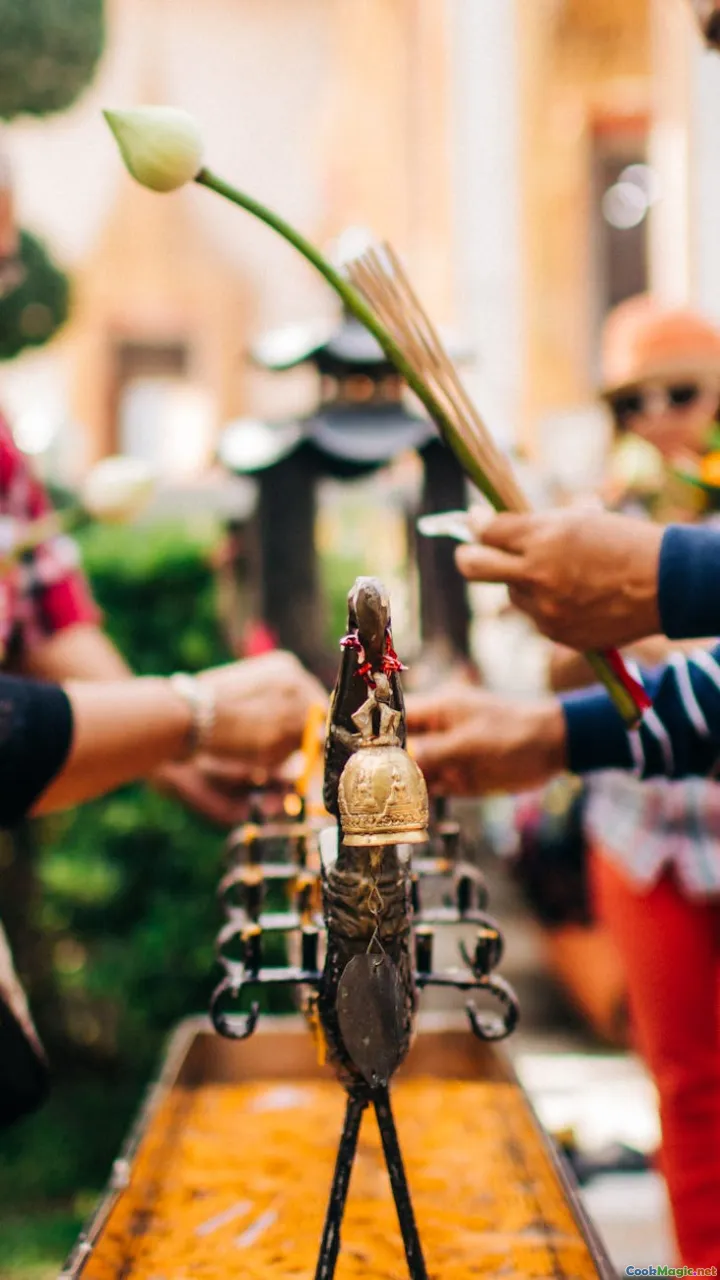
There is a tendency to cast plant-based eating as a new awakening. It is and it isn’t. Many of the world’s foodways have long spells of vegan cooking stitched into them, and festivals often amplify those histories.
In Thailand and across parts of Southeast Asia, the Nine Emperor Gods Festival marks a period of devotion where adherents eat jay—vegan and free of garlic, onions, and certain pungent herbs. You know you’ve hit a jay stall by the yellow flags with red script. In Phuket’s old town, steam curls off vats of soy braise. You might eat tofu satay lacquered with coconutty peanut sauce, or bite into a steamed rice cake topped with savory radish and chili. The air is spiced with incense and frying oil; the city moves in procession.
Ethiopian Orthodox fasting days align with a cuisine that is often plant-based: lentil and split pea wots, greens stewed with niter kibbeh swapped for oil during fasts, shiro that creams across the tongue. At festivals, injera becomes a plate and a utensil, its sour tang a counterpoint to smoky berbere. Watching someone tug a strip of injera and scoop with three fingers is an act of cooking education.
In Italy, cucina povera offers templates: farinata, a chickpea pancake from Liguria, comes out of a wood-fired oven lacquered on top and soft within; panelle in Sicily crisp and shatter. Roman markets sell puntarelle with anchovy dressing; swap in wakame and miso for a bright, briny vegan version that still snaps with cold water curls. In Egypt, koshari is vegan by design: lentils, rice, and macaroni tangled, topped with a cumin-red sauce and a roof of fried onions. Festival bowls layer texture like a drummer layering brushes and sticks.
Rastafari Ital cooking travels across the Caribbean diaspora, emphasizing unprocessed ingredients, coconut milk, and a deep respect for produce. A festival Ital stew hums: pumpkin, okra, callaloo, thyme, scotch bonnet heat perfuming rather than punishing. The broth glazes the lips with coconut and leaves the tongue pepper-fragrant.
Japanese shojin ryori, temple cuisine, teaches restraint that festivals deploy in samplers of pickles and nimono—stewed vegetables—balanced to the gram. Even when the environment is loud, a sesame tofu with a whisper of wasabi can command silence.
These traditions aren’t museum pieces. They are living repertoires, and the best festivals treat them like elders at the table.
Drinks That Frame The Bite: From Nitro Oat Lattes to Orange Wine

Beverages at vegan festivals have grown up. They are no longer afterthoughts; they are framing devices.
- Coffee: Nitro oat lattes pour like silk and carry cocoa and caramel notes that stand up to fried food. Cold brew on coffee ice stays true to strength. Chai with oat milk, peppery and cardamom-rich, pairs with almond pastries.
- Tea: Yuzu iced tea is a festival hero—acidic, fragrant, clearing the palate after anything spicy. Matcha leans grassy and calm; a matcha lemonade is a neon refresh.
- Ferments: Kombucha taps bubble with ginger, passion fruit, or chili-mango slakes. Tepache with brown sugar and cinnamon drives conversation between Mexican vendors and fermentation nerds.
- Alcohol: Natural wine, especially skin-contact whites with phenolic grip, pairs beautifully with fried oyster mushrooms and salty pickles. Crisp pilsners, many with hop waters and nonalcoholic options, refresh without dragging. A smoky mezcal-inspired mocktail might deploy lapsang souchong for aroma and verjus for acid.
The lesson is simple: build a beverage program like a chef, not a concession stand. Contrast and echo, balance and relief.
The Booth as a Restaurant in Miniature
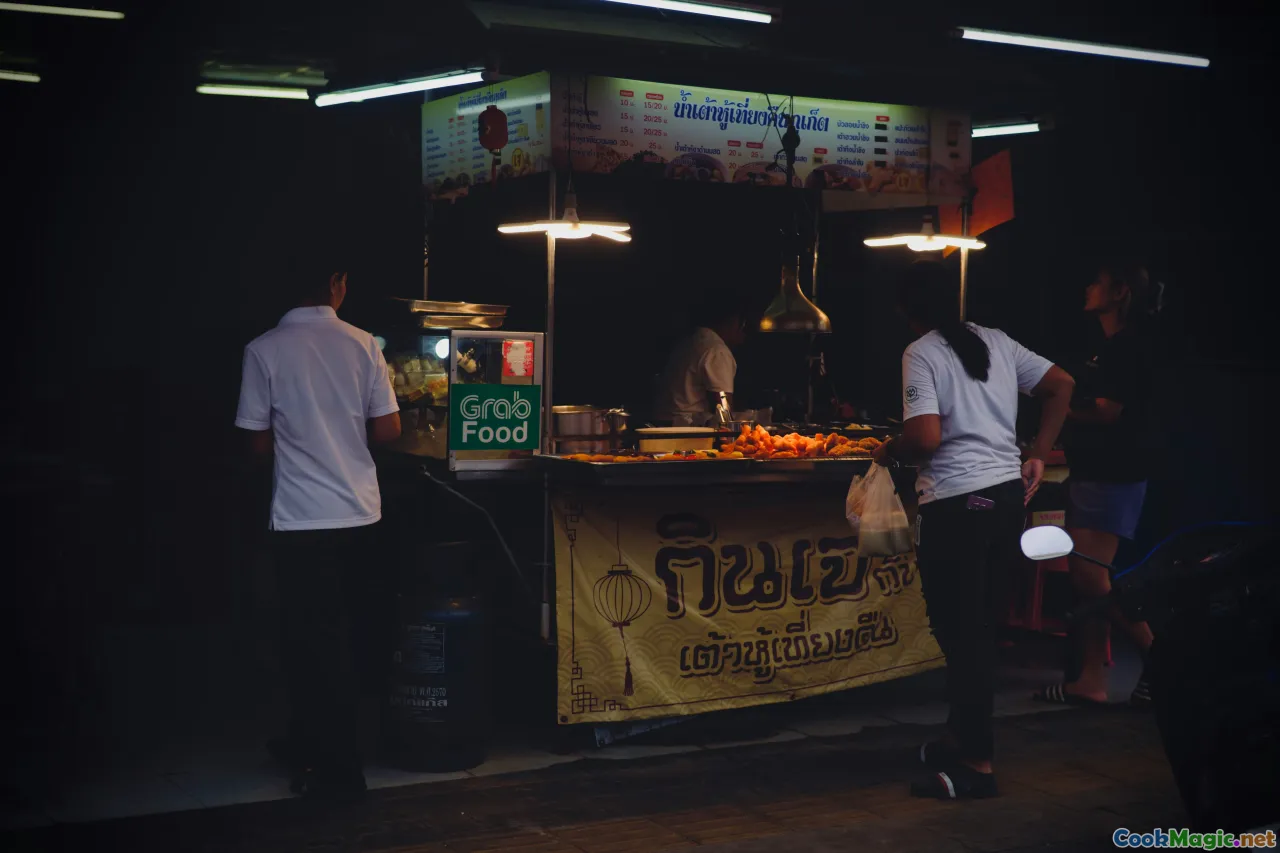
Behind every perfect taco or dumpling is a booth that functions like a pop-up kitchen. Efficiency and quality are not enemies; they are dance partners.
- Menu engineering: Three main items, two sides, one sweet. Cross-utilize sauces. The salsa verde brightening your taco should also be the splash on your esquites. Limit last-minute a la minute moves to one per dish.
- Mise en place: Pre-portion proteins or components with clear labels. Keep cold things cold with nested pans of ice; keep hot things safe above 60°C with induction warmers. A plancha, a small fryer, a rice cooker, and a portable induction burner can cook a world.
- Texture strategy: Fries stay crisp longer if par-fried and finished to order, then dusted with a starch-based seasoning that resists clumping. Bao stay fluffy if proofed in the cool of the morning and steamed in small batches.
- Allergen clarity: Clear signage for nuts, gluten, soy. Dedicate a set of tongs per allergen, color-code if possible. You gain trust with every transparent detail.
- Throughput: Assemble in stations. One person warms tortillas, one portions filling, one finishes with salsa and herbs. Keep garnish tubs shallow and refreshed; dead greens ruin the last ten feet of the experience.
- Waste and cleanup: Compostable serviceware is a baseline; reusable programs are better where possible. Oil is currency; filter and refresh. A clean line smells like promise.
A good booth is a lens: it focuses the chef’s point of view and throws it across a crowded field bright enough for strangers to see.
Mushrooms vs. Alt-Meats vs. Legumes: A Practical Comparison
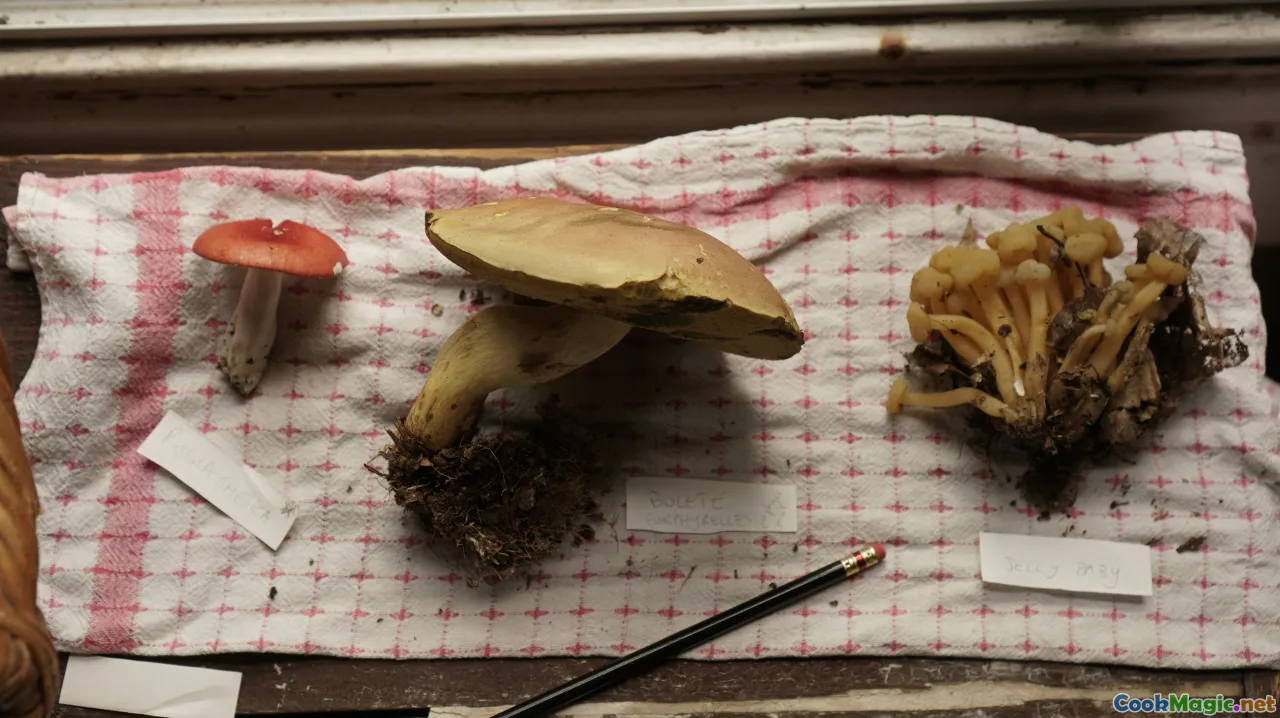
In festivals, ingredients are judged not just by flavor but by their behavior under stress—heat, hold times, humidity—and by the clarity of the story they tell.
- Mushrooms: King trumpets, oysters, shiitake, and lion’s mane excel at texture. They sear, shred, and soak up fat and spice. Oyster mushrooms pull into strips that mimic chicken tenderness; king trumpets sliced into coins deliver scallop-like bounce. They love smoke, acids, and fresh herbs. Downsides: moisture management is critical. They go soggy if steamed by sauce in clamshells. Solutions: par-roast, press, or wring; sauce lightly; vent packaging.
- Alt-meats: Seitan, tofu, tempeh, and newer pea-protein or mycoprotein products offer consistent chew and protein density. Seitan is a champion on the plancha, taking on char and sauce like a street-food pro. Tofu is a blank canvas; when frozen-thawed, it takes on a spongier texture that drinks marinades. Tempeh brings nutty complexity but needs a brief simmer or steam before sear to tame bitterness. Downsides: some versions taste flat; they need aggressive seasoning and finishing fat.
- Legumes and grains: Black beans, chickpeas, lentils, millet, and quinoa are cost-effective and hold heat well. Falafel done right is an engineering marvel of crisp and crumble. A black bean walnut burger sheds less liquid on the grill than many alt-meats and delivers a distinct personality. Downsides: texture fatigue if not designed for contrast; they demand bright pickles, slaws, or crunchy elements.
Many of the best festival dishes blend these families: a taco of seared king trumpets with a smear of black bean puree; a tempeh satay over rice with a punt of pickled cucumber; chickpea panisse fries with harissa mayo. The question is less either-or and more both-and: which combination keeps singing even when the sun hits high noon?
Using Festivals as Your R&D Lab: A Chef’s Field Guide
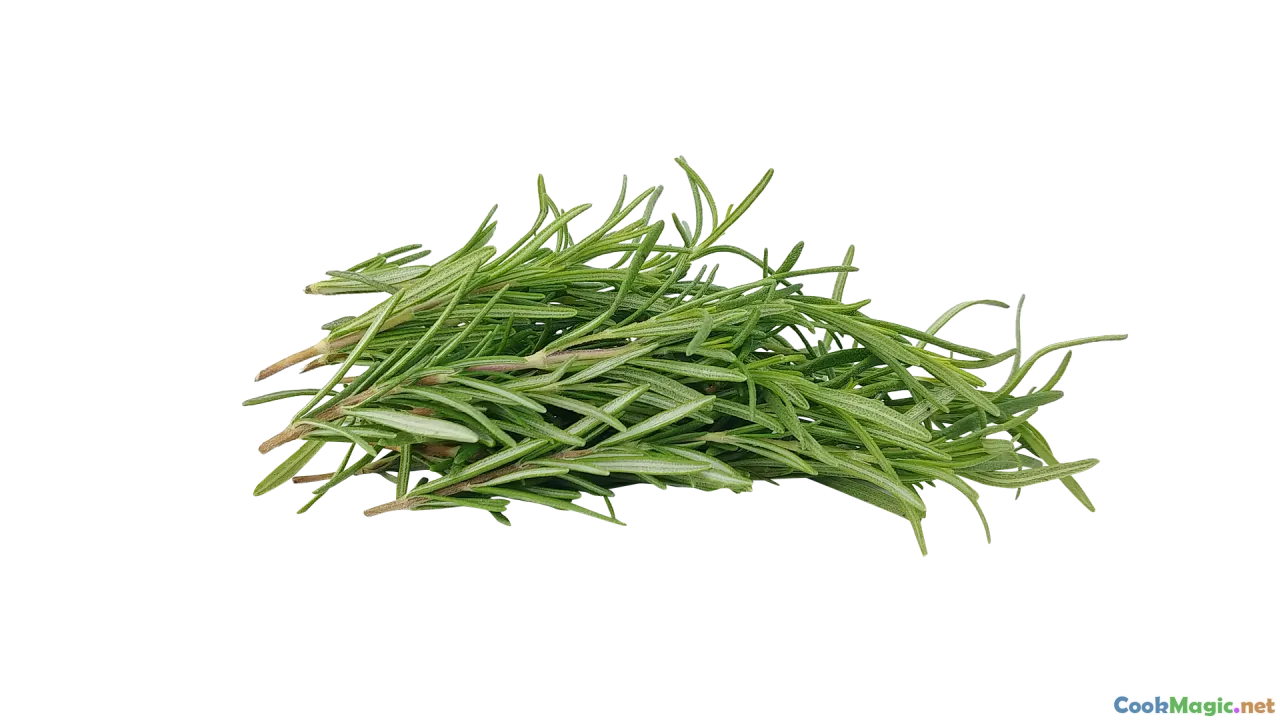
For culinary professionals, festivals are open-air R&D departments. Bring a notebook and an appetite, and move with intention.
- Map your curiosity: Choose a theme—char technique, umami layering, pickled counterpoints—and taste across booths for that lens. What acids are people using? Citrus, vinegar, tamarind, yuzu? Which finishes are most common—herb oil, chili crisp, furikake?
- Time the line: Dishes that maintain crunch and temperature after five, ten, fifteen minutes teach you about batters, coatings, and packaging. Buy two of the same, eat one immediately, and one after a walk.
- Talk to producers: Ask the tempeh maker what culture they use and what grain, the seaweed vendor which species gives clean minerality without iodine harshness, the miso fermenter how long their barrel ages. Ask vendors about their fails; they hold the real texture hacks.
- Taste the story: When a vendor cooks a family recipe, listen. The technique you need might be embedded in a memory—a way of toasting spices, a resting period before scorching onions, a marinade that uses tea or jaggery.
- Track microtrends: Spice blends like suya, berbere, or shichimi togarashi; condiments like salsa macha, zhoug, or yuzu kosho; equipment choices like konro grills or planchas. Note what repeats across geography; this is where the market is going.
- Reverse-engineer hold: Ask how long their crisp holds and why. Many will happily share: a cornstarch dredge with a little baking powder; a vinegar dip that gelatinizes pectin for crunch.
Use festivals as a feedback loop: gather data, return to your kitchen, prototype, then come back and test again in the wild.
Sourcing, Seasonality, and Sustainability You Can Taste
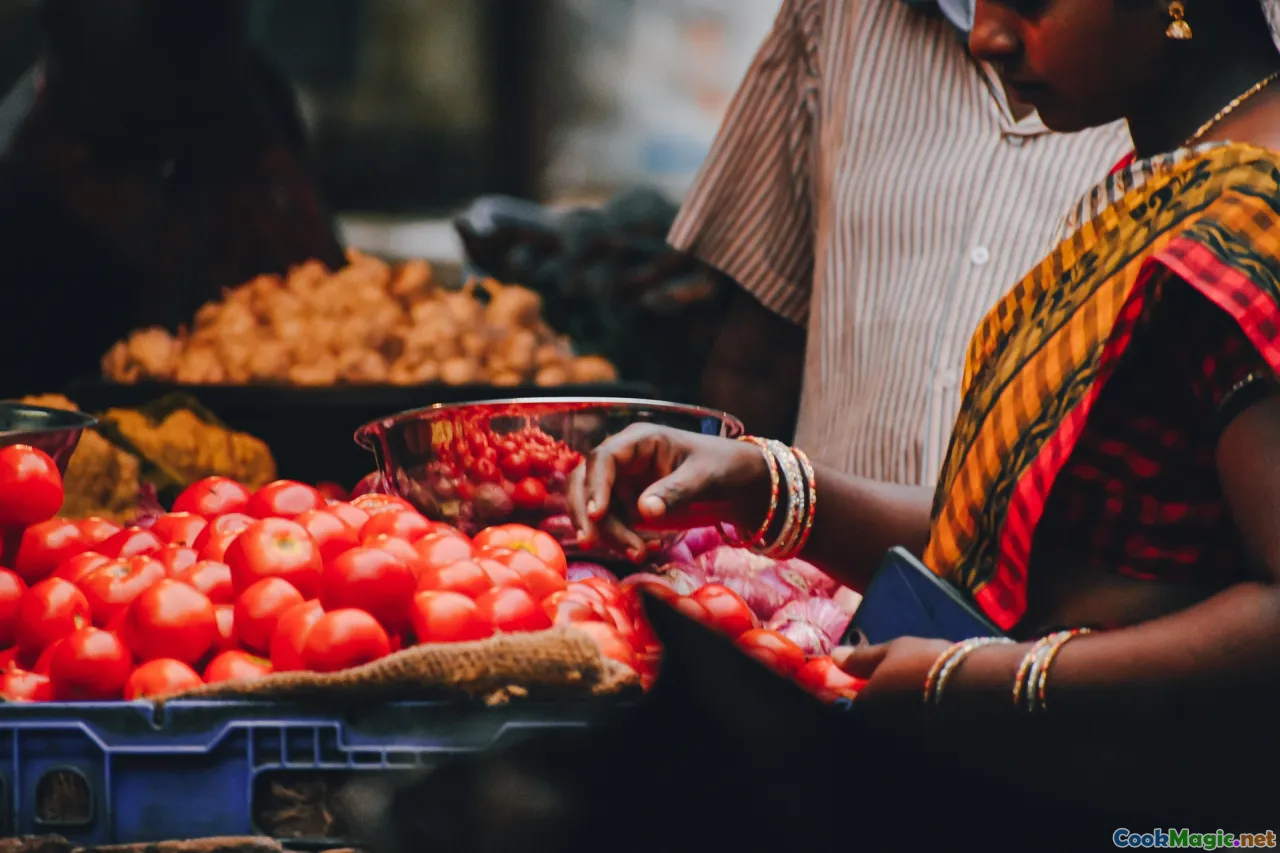
The greenest festivals make sustainability delicious. A stand featuring early-summer tomatoes slices them thick onto toasted sourdough slicked with garlic oil; the tomatoes taste like sunlight and rain. A mushroom vendor partners with a tofu maker to turn okara, the soy pulp byproduct, into fritters bound with scallions and corn. A hummus stand whips aquafaba into a lemony foam to spoon over beet hummus, saving what would otherwise go down the drain.
Compost bins show up in triplicate, with volunteers who guide hands to the right place. Oil recycling is part of the close-down ritual. Water stations stand in for bottled water; a few festivals pilot reusables with deposits that come back as drink credits. None of this is peripheral. It flavors the experience. Knowing that the corn you ate was grown an hour away underlines the sweetness; the mind is part of the palate.
Seasonality keeps menus agile. Spring brings tender peas scattered on minty smashed avocado toast with a shower of lemon zest. Summer piles stone fruit into salads with basil and black pepper. Autumn leans into squash—kabocha roasted until the edges caramelize—glossed with brown butter-style oil and toasted sage. Winter offers brassica power: charred cabbage wedges with miso glaze and sesame, their cores creamy like marrow.
Regional Microtrends Worth Watching
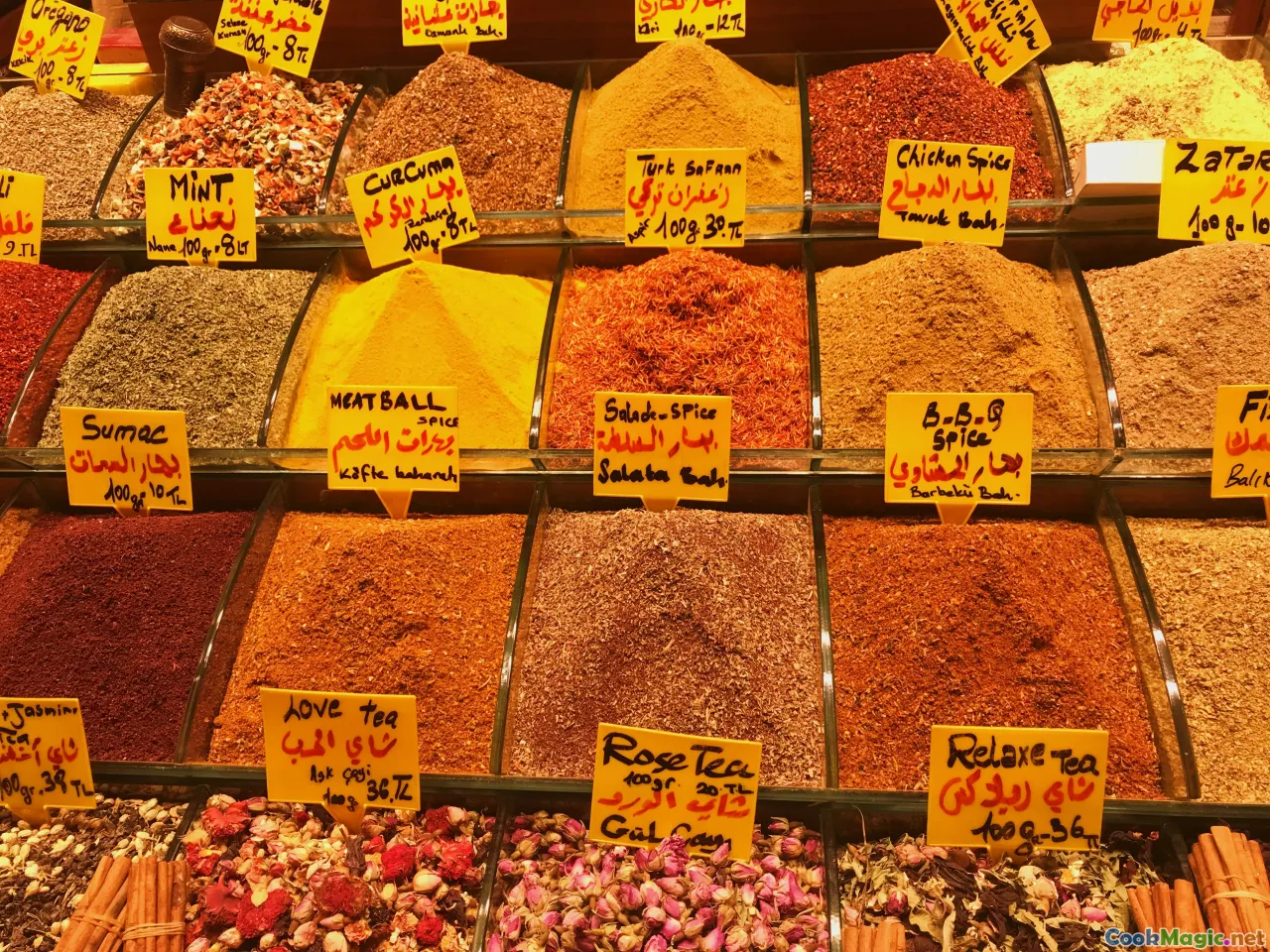
- The Southwest US pushes birria and elote mashups: mushroom birria tacos with consomme served in little cups, esquites topped with cripplingly good salsa macha, its roasted nut and chile oil sinking into the corn.
- The UK loves a vegan doner and pies: layered seitan with herb sauces, pie-and-mash with fresh parsley liquor and a splash of malt vinegar, sticky toffee puddings with oat custard pouring like satin.
- Germany keeps currywurst alive while elevating salads: smoked paprika-rich sauces, potato salads with aquafaba mayo, pretzels with beer mustard that reads as horseradish-clean.
- The Nordics lean ferments and rye: open-faced smorrebrod with smoked carrot ribbons standing in for lox, dill and lemon skirting across whipped cashew cheese, thin slices of pickled cucumber snapping like crisp air.
- East Asia features chewy joy: tteok on skewers, vegan odeng made with seaweed and soy, mapo fries as a fusion staple, and sweet soy-glazed eggplant buns that drip down the wrist.
- West African diaspora flavors show up as suya-spiced tofu skewers, peanut stew bowls over fonio, and plantain chips dusted with grains of selim.
- The Caribbean keeps doubles and jerk in rotation: doubles stacked and sauced, jerk jackfruit or oyster mushrooms smoked over pimento and finished with a brush of molasses heat, callaloo patties folded into flaky pastry.
These are not fads; they are meeting points where tradition and the festival stage hold hands.
Why These Festivals Matter

At heart, vegan food festivals are about belonging. They are spaces where a nephew who loves fried chicken learns that a mushroom can be as decadent, where someone raised on temple food tastes their childhood wrapped in an updated idea, where omnivores realize that plants, handled with care, do not whisper—they shout.
I think of a moment late in the day, the sun dropping, and a jazz trio setting up on a small stage. A woman in line ahead of me asks the vendor if the baklava is vegan. The cook grins and says, Yes, olive oil and pistachios, orange blossom and time. The tray smells like honey though there is none; it is the alchemy of syrup and spice. Nearby, a kid in a superhero cape eats cucumber slices with chili powder, no prompting needed. A chef off-shift mingles with a seaweed farmer, both juggling paper boats. The farmer talks about tides; the chef talks about chew. They exchange cards.
There is power in public cooking and public eating. It demystifies technique. It honors labor. It turns values into flavors that you can hold in your hand and devour. It sends you home smelling like smoke and cinnamon and something you can’t name but will try to recreate in your own kitchen, maybe tonight, maybe next weekend.
Plant-based cuisine is being redefined in the open, on streets and in squares, under canopies and cloudless skies. The future looks less like processed novelty and more like a deepening respect for ingredients and the people who carry them forward. It looks like a vendor who has mastered a batter that stays crisp long enough for you to find a spot at a communal table, like a brewer who pairs hop water with curry to cool the tongue, like a grandmother who tastes a new miso and nods.
On the way out, the air is cooler. The last of the griddles are going dark. You pass a stand still selling something warm: a sesame-studded bun split and filled with braised greens and garlic oil. You take one more bite that tastes like the end of a good story—satisfying, inevitable, and promising another chapter. You tuck a business card into your pocket, already planning your own menu, already thinking about the shimmer of pickles and the hum of a plancha. The night holds the smell of char and citrus. The language of the festival lingers on the tongue, fluent now, and hungry for more.









